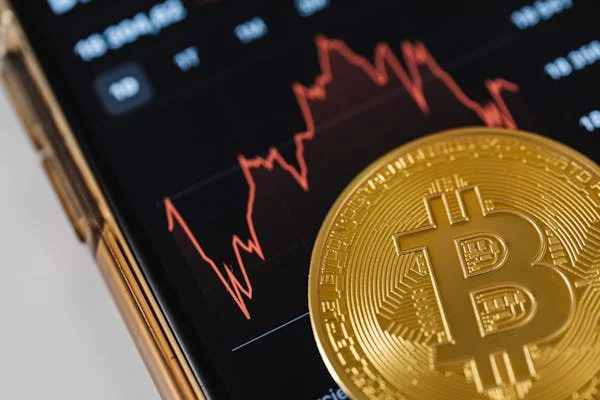How Tariffs Impact the Crypto Market

Image Credit: pexels
10th April 2025 5 mins read Published By: Infohub
The crypto market is a dynamic and rapidly evolving landscape, influenced by various factors, including regulatory changes, technological advancements, and macroeconomic trends. One significant factor that can have a profound impact on the crypto market is tariffs. Tariffs are taxes imposed by governments on imported goods and services, and they can affect the cost of doing business for companies operating in the crypto space. In this article, we will explore how tariffs impact the crypto market, their key effects, and strategies for investors to navigate these challenges.
Advertisement
Tariffs, taxes imposed on imported or exported goods, are powerful tools governments use to shape trade and protect domestic industries. While they target traditional markets like manufacturing or agriculture, their ripple effects reach far—including into the seemingly decentralized world of cryptocurrencies. From Bitcoin to Ethereum, the crypto market isn’t immune to the economic shifts tariffs create.
When tariffs are announced, markets often flinch. Higher costs for imported goods can spark fears of inflation, slower growth, or trade wars, pushing investors away from high-risk assets. Cryptocurrencies, despite their decentralized roots, often behave like tech stocks in these moments. For example, when major U.S. tariffs were introduced in early 2025, Bitcoin dropped to around $95,000, and Ethereum fell sharply, reflecting a broader sell-off in riskier investments. Why? Tariffs breed uncertainty, and crypto, still seen as speculative by many, gets hit when confidence wanes.
Tariffs tend to drive up prices for goods, contributing to inflation. Central banks may respond by raising interest rates to ease the economy, which typically hurts crypto that thrive on cheap money. Higher rates make borrowing costlier, reducing liquidity for speculative investments. Tariffs can increase consumer prices, fueling inflation. Since many cryptos (like Bitcoin) have limited supply, they are often viewed as "digital gold" during inflationary periods. If tariffs push inflation higher, institutional investors may allocate more funds to crypto.
In 2025, fears of tariff-fueled inflation led to Bitcoin dipping below key support levels as investors braced for tighter monetary policy. Yet, there’s a flip side, if inflation erodes trust in fiat currencies, some turn to Bitcoin as a hedge, potentially boosting demand over time.
Advertisement
For proof-of-work cryptocurrencies like Bitcoin, tariffs on tech imports—think specialized mining chips—can sting. Much of the world’s mining hardware comes from China, and tariffs could raise costs for U.S.-based miners, squeezing their profits. This might reduce mining activity, impacting network security and, indirectly, prices. Smaller miners could shut down, concentrating hash power among bigger players. While Ethereum’s shift to proof-of-stake dodges this issue, Bitcoin’s energy-intensive model remains vulnerable to trade disruptions. For exmaple, ASIC miners can increase operational cost for crypto miners, reducing the profits made my the company. This may lead to: Lower mining activity, affecting blockchain security (for Proof-of-Work coins)amd Migration of mining operations to countries with lower tariffs.
Discover More:
Why Binance Hasn’t Listed Pi Network Yet: Key ReasonsTariffs can strengthen the importing country’s currency in the short term by reducing reliance on foreign goods. Historically, a stronger U.S. dollar puts downward pressure on Bitcoin, as the two often move inversely. However, prolonged trade tensions could weaken faith in fiat systems globally, nudging investors toward decentralized assets. If tariffs spark retaliatory policies and currency devaluations elsewhere, crypto could become a go-to for cross-border transactions, bypassing traditional banking hurdles.
While tariffs often trigger short-term pain, they can plant seeds for crypto’s long-term growth. Economic instability—think trade wars or currency crises—highlights the appeal of assets outside government control. Bitcoin, often called “digital gold,” could gain traction if tariffs erode confidence in fiat systems. Stablecoins like USDC might also see a surge in use for international trade, offering a way to sidestep volatile currencies or costly bank fees. Tariffs could, paradoxically, accelerate crypto adoption by exposing the fragility of centralized economies.
What Should Investors do?
In the short term, investors should brace for volatility—tariff announcements which can send prices swinging. Watch economic indicators like inflation rates and central bank moves, as these shape risk sentiment. Diversify portfolios i.e mix of Bitcoin, stablecoins, and altcoins. For miners, keep tabs on hardware costs and energy prices, which tariffs could inflate. Long-term, consider crypto’s role as a hedge; if trade disputes escalate, decentralized assets might shine. Diversifying across Bitcoin, Ethereum, and stablecoins can balance risk while capturing potential upsides.